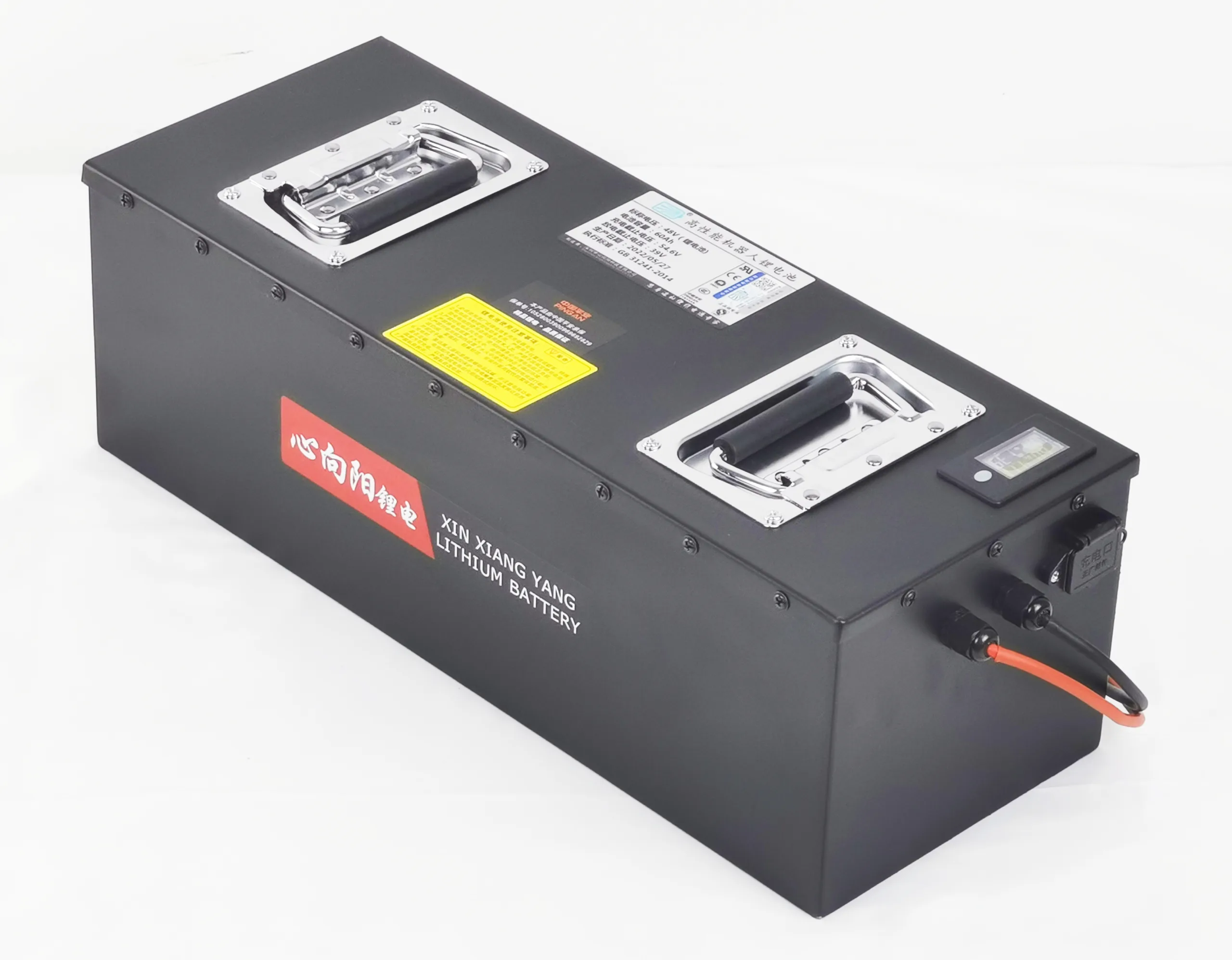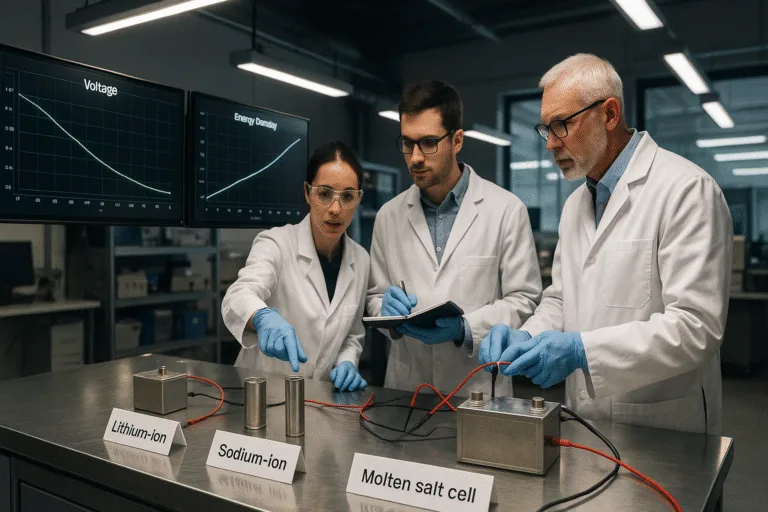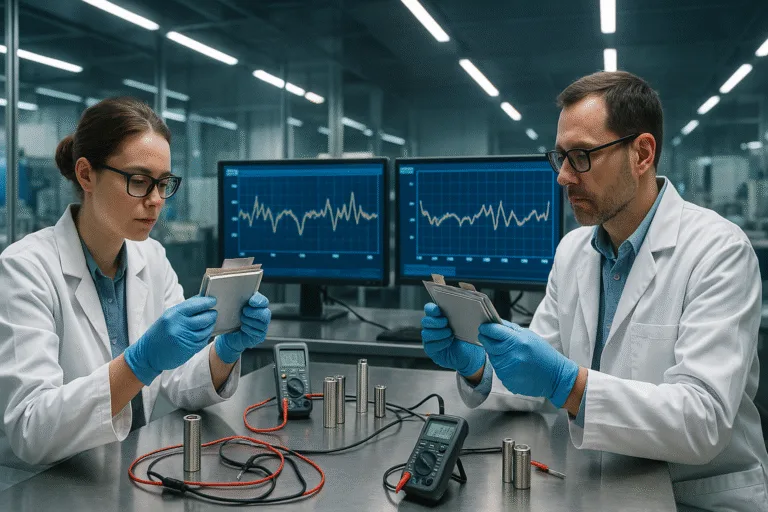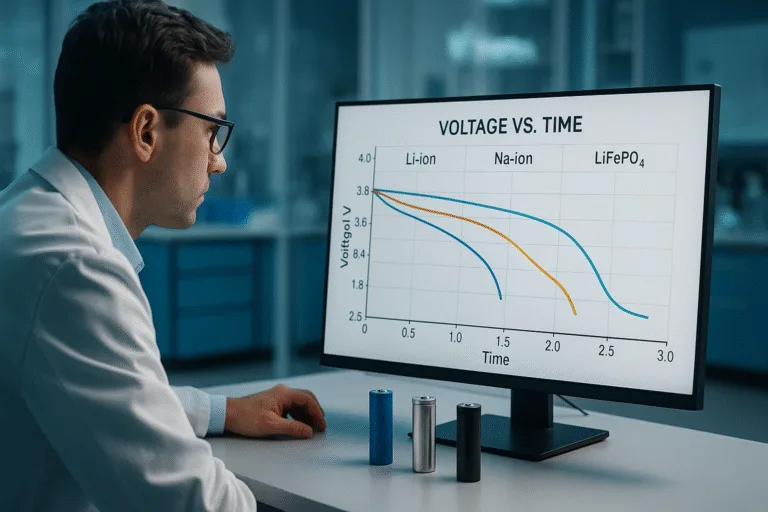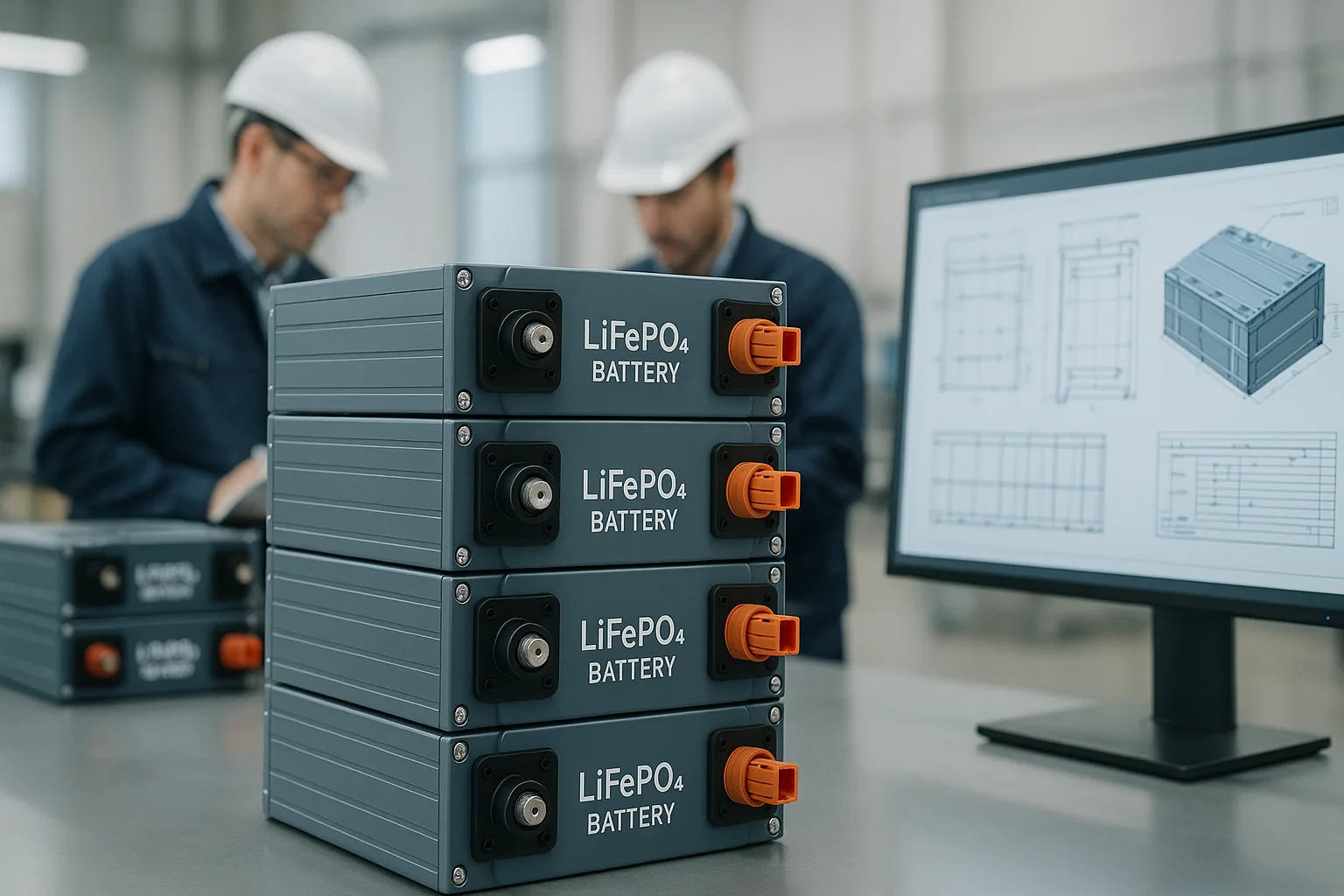
Do you need reliable power for your products? Are you seeking a custom energy solution? We know the challenge of finding the right fit. Imagine a battery pack designed precisely for your needs, delivering consistent and safe power.
A LiFePO₄ battery pack is an assembly of individual LiFePO₄ cells connected together, along with a Battery Management System (BMS) and other components, to provide a specific voltage and capacity for an application.
I remember the days when standard batteries limited innovation. Then, custom LiFePO₄ packs became widely available. This changed how we approach product development. Let’s explore the world of LiFePO₄ battery packs together.
What is a LiFePO₄ battery pack1 and what are its key components?
Have you ever wondered what makes up a battery pack? It is more than just cells. Understanding its parts helps us appreciate its function.
A LiFePO₄ battery pack is a complete power unit, built from multiple LiFePO₄ cells, a Battery Management System (BMS)2, an enclosure, and connectors. These components work together to provide safe, reliable, and application-specific electrical energy.
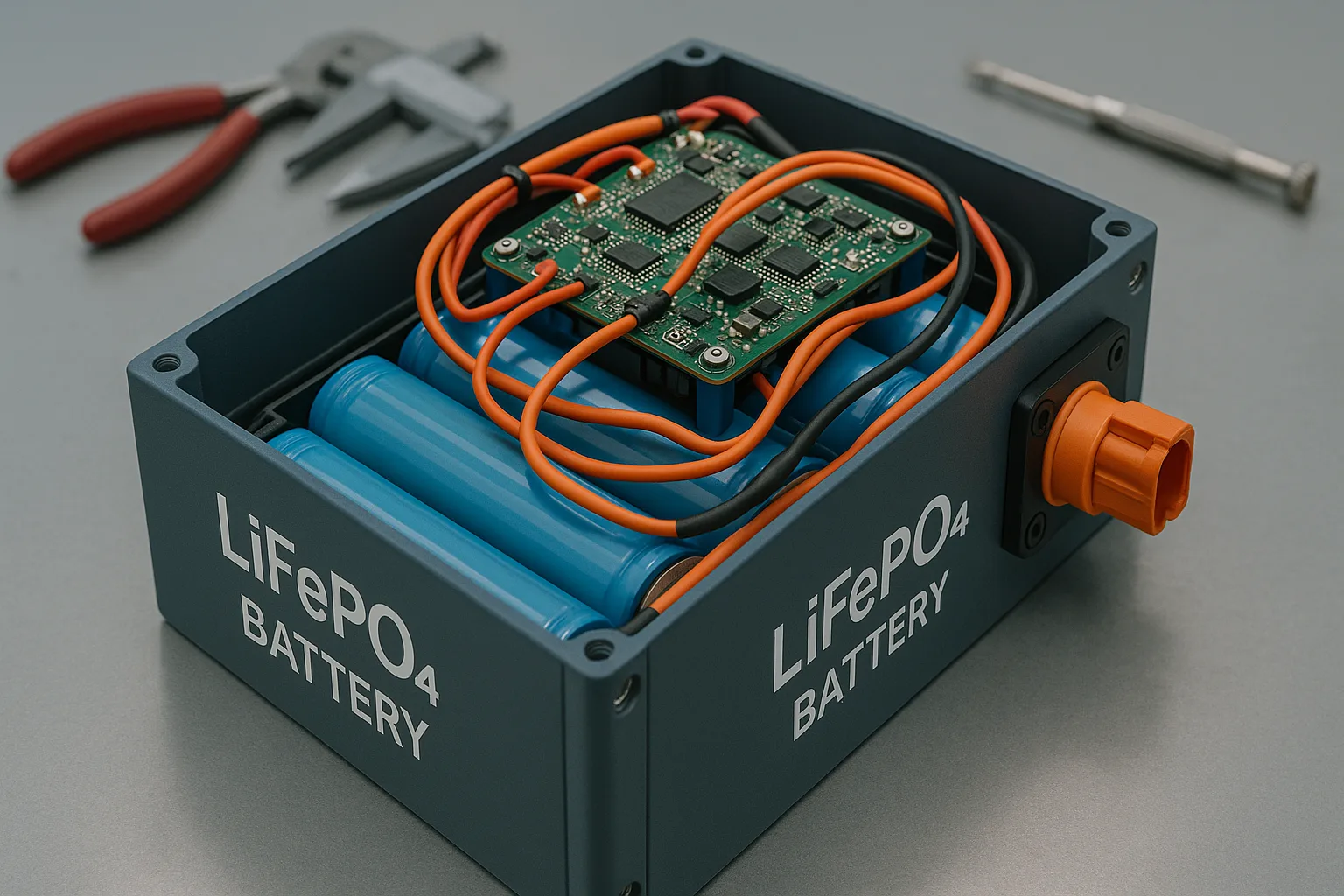
The Core: LiFePO₄ Cells
The heart of any LiFePO₄ battery pack is its cells. These are the individual units that store energy. We can connect them in series to increase voltage. We can connect them in parallel to increase capacity. For example, a 48V pack might use 15 cells in series (15S). Each cell usually has a nominal voltage of 3.2V.
The Brain: Battery Management System (BMS)
The BMS is vital for safety and performance. It monitors and protects the cells. It acts like a guardian for your battery. I always emphasize a robust BMS.
- Cell Balancing3: Ensures all cells charge and discharge evenly. This makes the pack last longer.
- Overcharge Protection4: Stops charging when cells are full.
- Over-discharge Protection5: Prevents cells from draining too low.
- Overcurrent Protection: Protects against too much current flow.
- Temperature Monitoring6: Keeps track of the pack’s temperature to prevent overheating.
The Shell: Enclosure7 and Connectors8
The enclosure protects the cells and BMS from the outside world. It keeps dust, water, and impacts away. Connectors allow the pack to connect to your device and charger. These parts ensure the pack is durable and easy to use. I often advise clients on the best casing for their product.
| Component | Primary Function | Importance |
|---|---|---|
| LiFePO₄ Cells | Store and release electrical energy | Determines voltage and capacity |
| BMS | Monitors, protects, and balances cells | Essential for safety, lifespan, and performance |
| Enclosure | Physical protection for internal components | Durability and environmental resistance |
| Connectors | Electrical interface for power and charging | Ensures proper connection to devices |
How can I customize a LiFePO₄ battery pack for my product?
Are you wondering how to get a battery pack that perfectly fits your product? Customization9 is key. It ensures optimal performance and integration.
You can customize a LiFePO₄ battery pack by specifying its voltage, capacity, physical dimensions, casing type, BMS features (e.g., Bluetooth), and connector types to match your product’s unique requirements.

Defining Your Product’s Power Needs
First, understand what your product needs. This includes voltage and current. Do you need 36V, 48V, or 52V? How long should the battery last? This defines the pack’s capacity. I always start with these core questions.
Customizing Physical Aspects
The battery pack must fit in your product. This means customizing its size and shape.
- Dimensions: We can design packs to specific length, width, and height.
- Casing Type10: Choose from various standard cases like Hailong or Dorado. Or, we can design a completely custom casing. This ensures it looks good and fits perfectly.
- Mounting Points11: Add custom mounting points for easy installation in your device.
Tailoring BMS and Connectivity
Modern BMS options offer smart features. You can choose what is important for your product.
- Smart BMS12: Add Bluetooth for real-time monitoring via an app. This gives users data like remaining capacity and cell health.
- Communication Protocols13: Integrate specific communication methods if your product needs to talk to the BMS.
Selecting Connectors and Labels
The right connectors ensure easy and safe hook-up.
- Connector Type: Specify the type of power and charging connectors needed.
- Logo and Labels: Add your brand’s logo and specific labels, like barcodes or warning signs. This helps with branding and inventory.
What’s the difference between a LiFePO₄ pack and a LiFePO₄ cell?
Are you still a bit confused about cells versus packs? It is a common question. They are related but distinct.
A LiFePO₄ cell is a single, fundamental electrochemical unit, providing a fixed voltage (typically 3.2V). A LiFePO₄ pack is a complete assembly of multiple cells, often with a BMS and enclosure, designed to meet a specific application’s voltage and capacity demands.
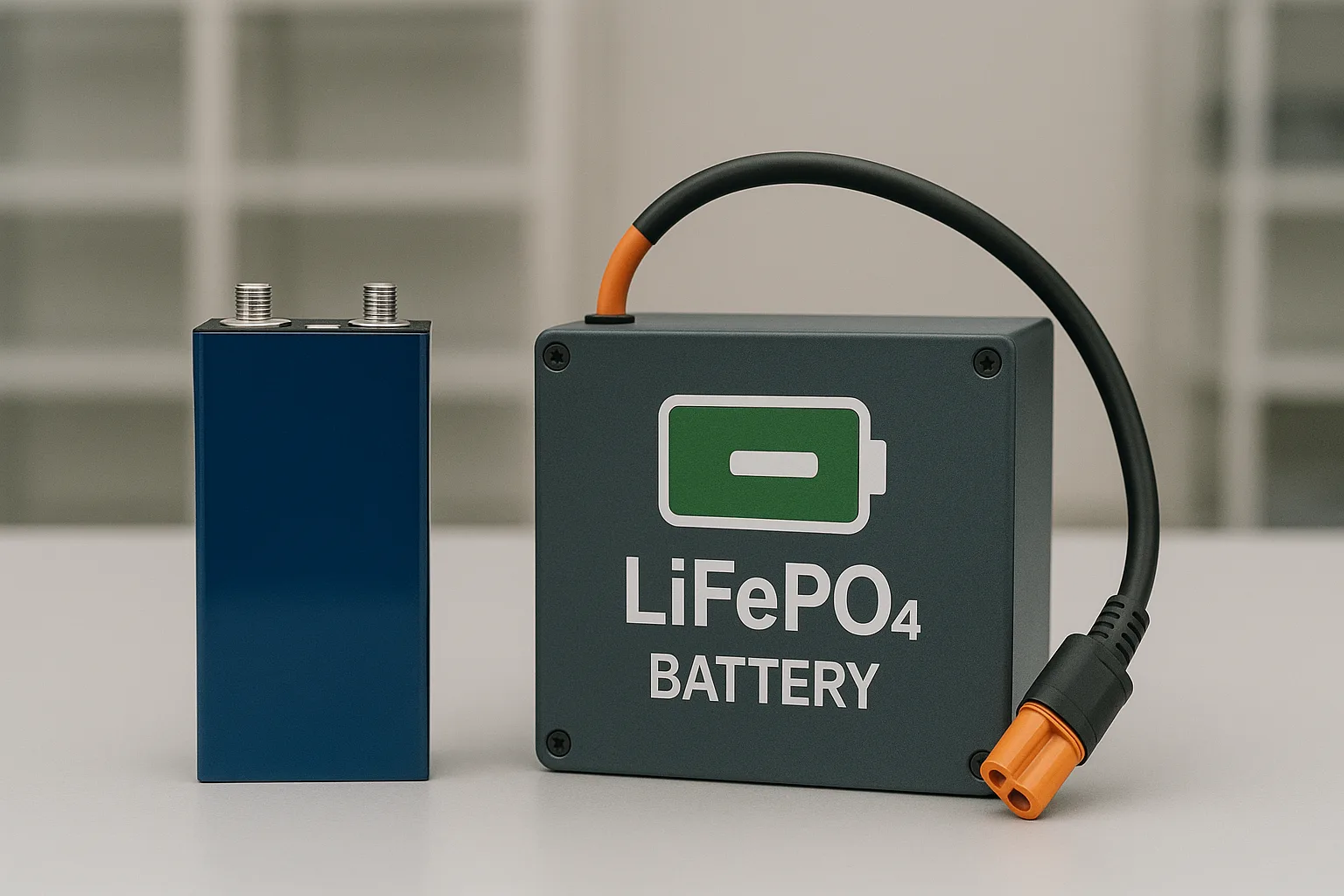
The Cell: A Single Power Unit
Think of a cell as the smallest piece of a battery. It’s like one LEGO brick. It has a positive and negative terminal. It provides energy at its inherent voltage, usually 3.2V for LiFePO₄. A single cell can power very small items, like a tiny flashlight.
The Pack: A Complete Power System
A pack is many cells connected together. It’s like building a complex structure with many LEGO bricks. It is designed to deliver higher voltage or capacity. It also includes protective circuits.
- Voltage and Capacity14: A pack’s voltage and capacity are determined by how its cells are connected.
- Complexity: A pack is more complex than a cell. It includes wiring, a BMS, and an outer casing.
- Application: Packs are used for larger applications. These include e-bikes, solar storage, and electric vehicles.
| Feature | LiFePO₄ Cell | LiFePO₄ Pack |
|---|---|---|
| Definition | Single energy unit | Assembly of multiple cells |
| Voltage | Fixed (e.g., 3.2V nominal) | Configurable (e.g., 36V, 48V) |
| Capacity | Unit capacity (e.g., 5Ah) | Configurable (e.g., 10Ah, 20Ah) |
| Components | Electrodes, electrolyte | Cells, BMS, wiring, enclosure, connectors |
| Use Case | Small electronics, building blocks | E-bikes15, EVs, solar storage, larger devices |
What are the main factors that influence the performance of a LiFePO₄ battery pack?
Are you curious about what makes a LiFePO₄ battery pack perform well? Many factors play a role. Understanding them helps ensure long-lasting power.
The main factors influencing LiFePO₄ battery pack performance include the quality and matching of individual cells, the design and features of the Battery Management System (BMS), operating temperature, charge/discharge rates, and the overall pack assembly quality.

Cell Quality and Matching16
High-quality cells are fundamental. They should be uniform. If cells are not matched well in voltage, internal resistance, and capacity, the pack will not perform optimally. Poor matching leads to uneven aging. I always ensure cells are rigorously tested and matched before assembly.
The BMS Design
A well-designed BMS is critical. It balances cells, prevents overcharge/discharge, and manages temperature. A weak BMS can severely limit a pack’s performance and lifespan. A smart BMS, for example, can optimize charging cycles for longer life.
Operating Temperature
Temperature greatly affects performance. Both extreme cold and extreme heat can reduce capacity and lifespan. LiFePO₄ performs well in a wider range than some other chemistries, but staying within ideal temperatures (e.g., 0-45°C for charging) is best. I always consider the end-use environment for thermal design.
Charge and Discharge Rates17
How fast you charge or discharge the pack matters. High rates can generate more heat. This can stress the cells. While LiFePO₄ handles higher rates well, consistent extreme rates can reduce cycle life. It is important to match the pack’s C-rating to the application’s power demands.
Assembly Quality18
The way the pack is built affects its performance. Poor welding, loose connections, or inadequate insulation can lead to energy loss, safety issues, or premature failure. Professional assembly ensures durability and consistent performance. Our factory uses strict quality checks at every step.
How is a LiFePO₄ battery pack assembled in a factory?
Have you ever wondered what happens inside a battery factory? Assembling a LiFePO₄ battery pack is a detailed process. It requires precision and quality control.
A LiFePO₄ battery pack is assembled in a factory through a multi-step process including cell sorting and matching, spot welding cells into modules, integrating the Battery Management System (BMS), enclosing the pack, and performing rigorous final testing and quality control.
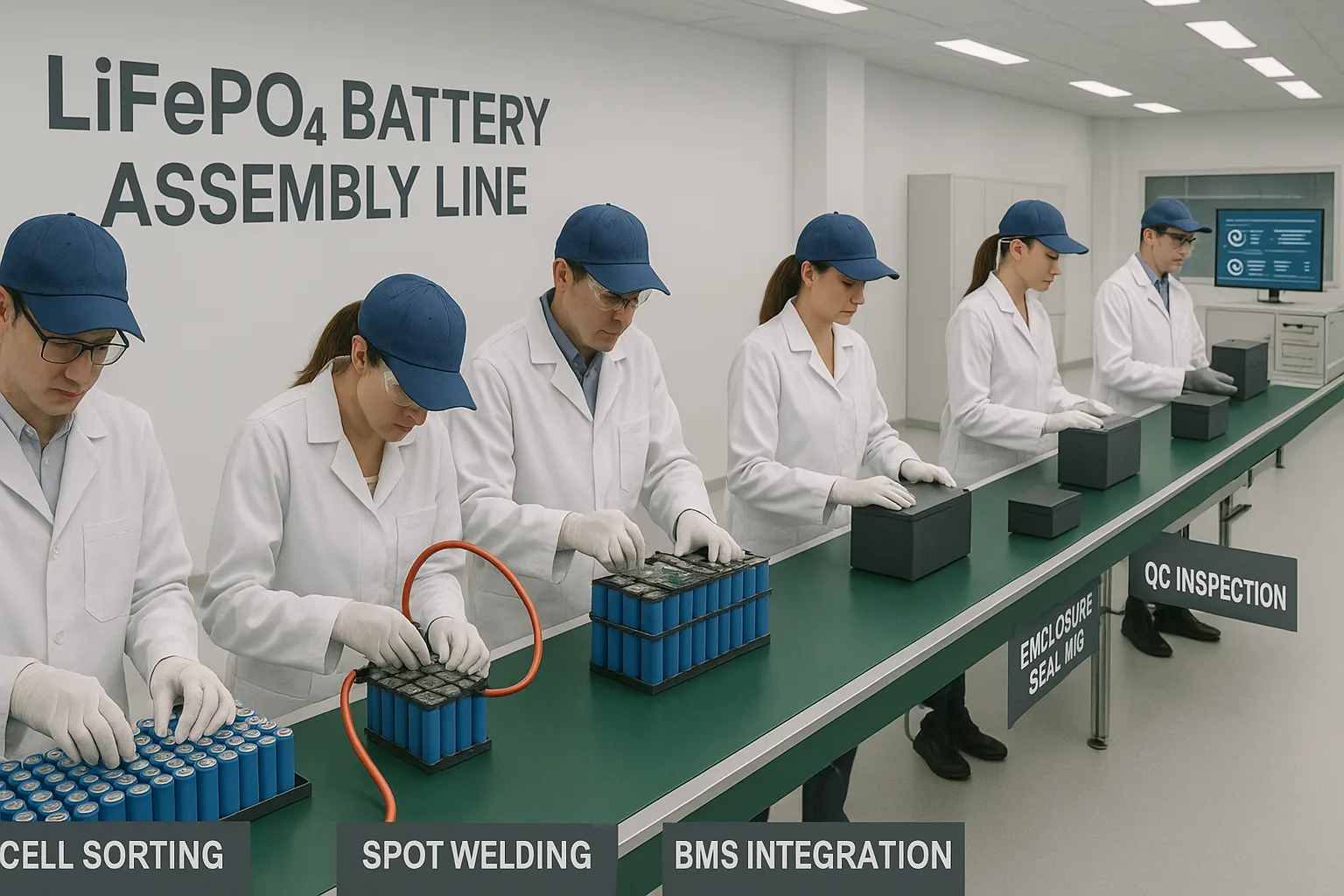
Step 1: Cell Sorting and Matching
First, we receive individual LiFePO₄ cells. We then sort them. We check their voltage, internal resistance, and capacity. Only cells with very similar characteristics are grouped together. This ensures uniform performance in the final pack. I believe this first step is crucial for overall quality.
Step 2: Cell Connection (Spot Welding)
Next, the matched cells are connected. We use specialized spot welding machines. This creates strong electrical connections between cells. Cells are welded in series and parallel based on the desired pack voltage and capacity. This forms cell modules or the complete cell array.
Step 3: BMS Integration and Wiring
The Battery Management System (BMS) is then added. It is wired to each cell group. The BMS wires monitor cell voltages and temperatures. Power cables are also attached. These cables will connect the pack to your product. This step is about connecting the "brain" of the battery.
Step 4: Enclosure and Sealing
Once the cells and BMS are wired, they are placed inside the chosen enclosure. This can be a standard case or a custom-designed housing. The pack is then sealed. This protects the internal components from environmental factors like dust and moisture.
Step 5: Final Testing and Quality Control19
Before shipping, every battery pack goes through thorough testing.
- Functional Testing: We check if the BMS is working correctly.
- Capacity Testing: We measure the actual capacity of the pack.
- Safety Testing20: We perform various safety checks to ensure compliance with standards like UN38.3.
- Appearance Inspection: We check for any physical defects.
This ensures every pack meets our high standards. I personally oversee our quality control process.
Conclusion
LiFePO₄ battery packs are custom power solutions. They combine cells, a BMS, and an enclosure. Customization factors like voltage, size, and BMS features ensure a perfect fit. Cell quality, BMS, temperature, and assembly all influence performance. Factory assembly involves precise sorting, welding, and rigorous testing.
-
Explore this link to understand the structure and function of LiFePO₄ battery packs. ↩
-
Learn how a BMS enhances battery safety and performance. ↩
-
Discover how cell balancing extends battery life and improves performance. ↩
-
Understand the mechanisms that prevent battery overcharging and ensure safety. ↩
-
Find out how this feature prevents damage to battery cells. ↩
-
Explore the importance of temperature management in battery performance. ↩
-
Learn how enclosures protect battery components from environmental factors. ↩
-
Discover the various connectors that ensure safe and efficient power transfer. ↩
-
Explore options for tailoring battery packs to meet specific product needs. ↩
-
Discover the various casing options that provide protection and aesthetics. ↩
-
Learn about the importance of custom mounting points for ease of use. ↩
-
Learn how smart BMS features enhance user experience and battery management. ↩
-
Explore how communication methods enhance battery functionality. ↩
-
Explore the relationship between cell configuration and battery specifications. ↩
-
Discover the role of LiFePO₄ batteries in powering electric bicycles. ↩
-
Learn how uniformity in cell characteristics enhances overall battery performance. ↩
-
Understand the impact of charging speeds on battery lifespan and efficiency. ↩
-
Discover how assembly practices affect battery performance and safety. ↩
-
Understand the rigorous testing processes that ensure battery reliability. ↩
-
Understand the safety standards that battery packs must meet before use. ↩

